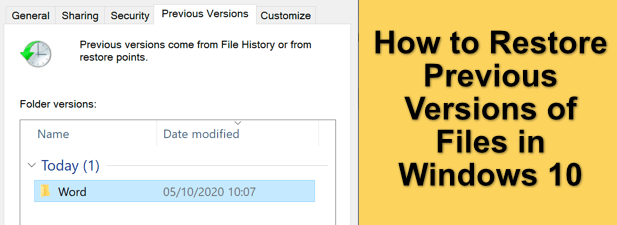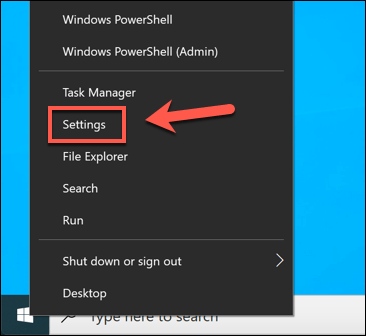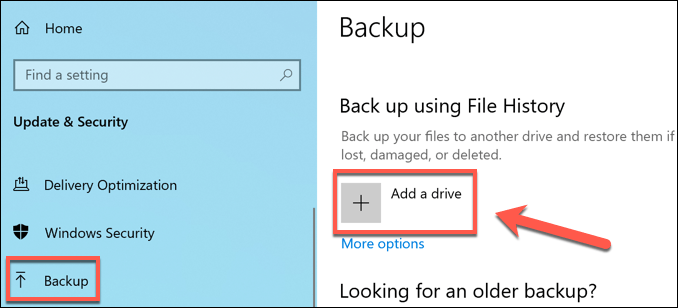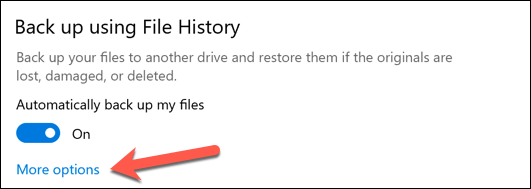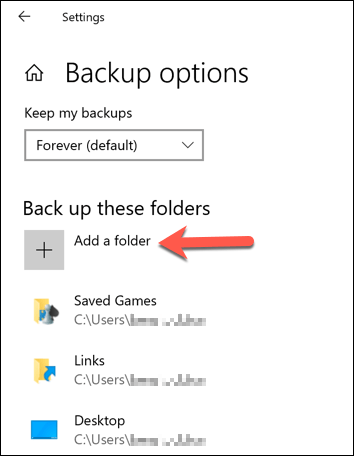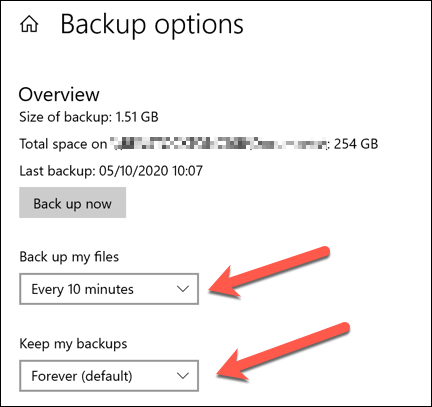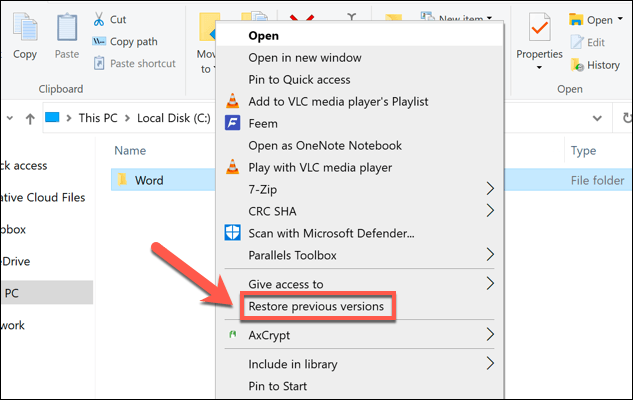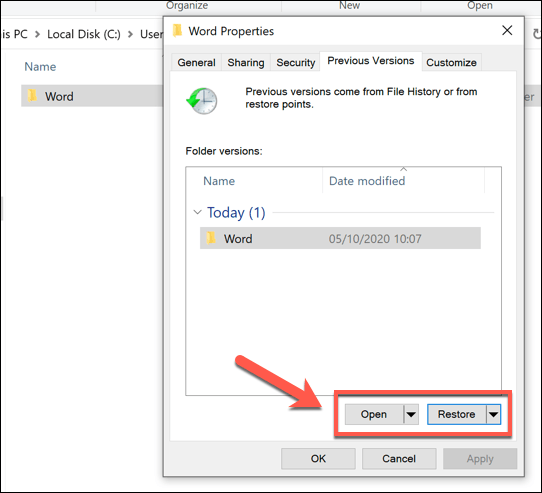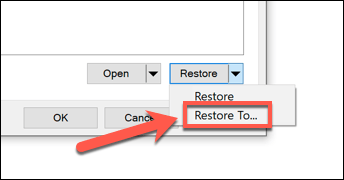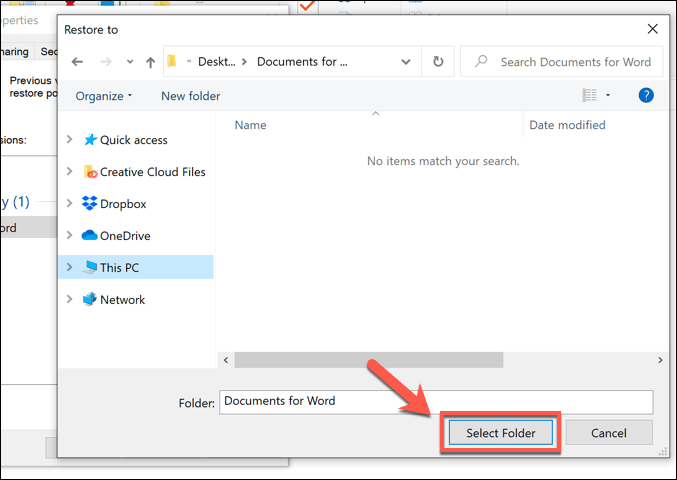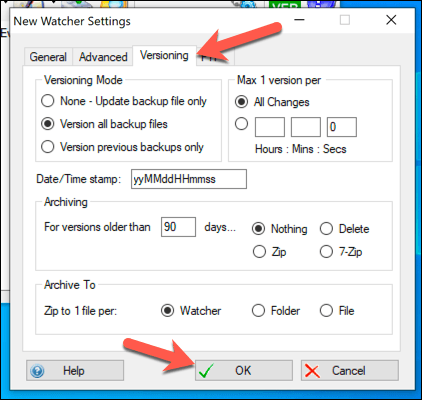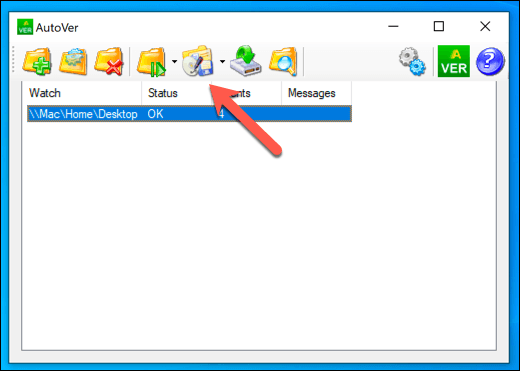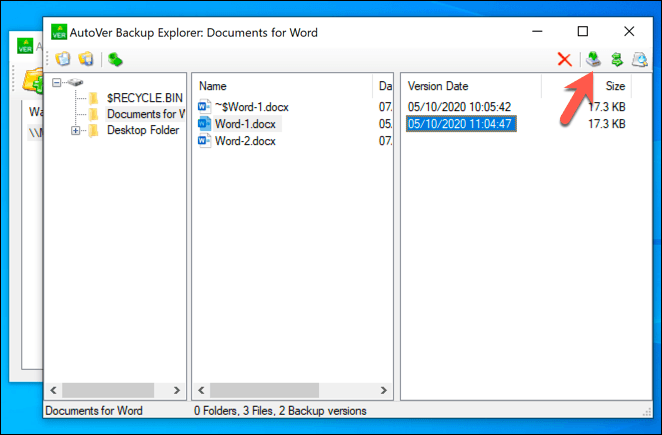Realizing this was an issue, Microsoft introduced File History, a feature that allows you to roll back changes to your files, but there are alternatives if you’d prefer to use a third-party solution. To restore previous versions of files in Windows 10, here’s what you’ll need to do.
Restore Previous Versions of Files Using File History
If you want to roll back the changes to a file and restore a previous version, the best way to do it is to use Windows’ own file versioning features. You’ll need to have enabled File History first, which typically uses an external drive (or networked drive in some cases) to store the files. If File History isn’t enabled, then you may not be able to restore a previous version in Windows 10 unless you’re already syncing your files to cloud storage. Windows File Explorer will open to show you the restored files, whether you selected to overwrite the new copies or save them elsewhere instead. This option, as we’ve mentioned, only works if you had File History enabled before you made changes to files. Unfortunately, there aren’t many options to help you restore previous versions in Windows 10 if you don’t already have a backup system in place. You may have more luck if you deleted the file, however, as Microsoft now offers a Windows File Recovery tool to help recover lost files.
Using Third Party File Versioning Software
Windows File History is a great option for file versioning, but it relies on using an external drive for backups, and backups are limited to every 15 minutes. While it does support network drives, support for this does seem to be more problematic, depending on how your network is configured. With that in mind, you may prefer to use third-party file versioning software instead. While paid options exist, one of the simplest file versioning apps for Windows is AutoVer, a free app that will allow you to regularly back up your files to external drives, network attached storage drives, and offsite FTP servers. While AutoVer may look a little dated, it works incredibly well in regularly backing up your files and giving you a third-party option for file versioning in Windows 10. Files are backed up almost immediately, letting you quickly recover changes to files that may have been changed by mistake. While cloud storage services like Google Drive are alternative options, you’re limited to how often versions of the file can be stored for. This makes unlimited file versioning, like those offered by AutoVer, a superior solution for long-term backups.
Keeping Your Windows 10 Files Safe
Your PC won’t last forever, so it’s important to always have a backup system in mind for Windows. Restoring previous versions of files in Windows 10 is much easier if you begin using offsite cloud storage, like Google Backup and Sync, to store copies of your files. If you’re only worried about rolling back small changes, however, then Windows’ built-in file history should work well, but you can save versions of files more regularly using tools like AutoVer. If you’ve deleted files by mistake, you may be able to retrieve them using third-party software like Shadow Explorer.
